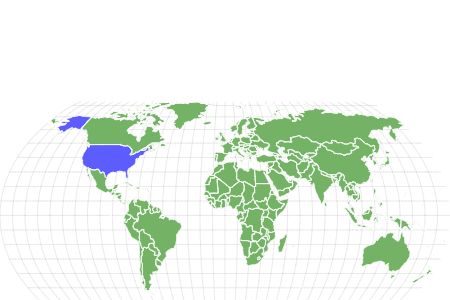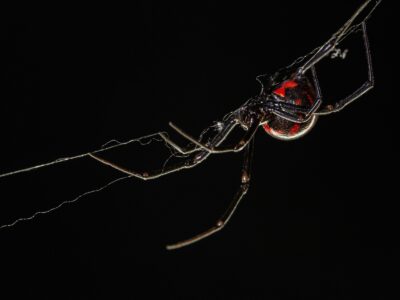Pygora Goat
.jumbotron {
background-image: url(“https://a-z-animals.com/media/2021/07/Pygora-Goat-header-400×300.jpg”);
}
}
@media only screen and (min-width: 641px) and (max-width: 920px) {
.jumbotron {
background-image: url(“https://a-z-animals.com/media/2021/07/Pygora-Goat-header-470×370.jpg”);
}
}
@media only screen and (min-width: 921px) {
.jumbotron {
background-image: url(“https://a-z-animals.com/media/2021/07/Pygora-Goat-header.jpg”);
}
}
Pygora Goat
Capra aegagrus hircus
The Pygora goat is exclusively bred for their fleece, and they produce three different kinds.
Pygora Goat Scientific Classification
- Kingdom
- Animalia
- Phylum
- Chordata
- Class
- Mammalia
- Order
- Artiodactyla
- Family
- Bovidae
- Genus
- Capra
- Scientific Name
- Capra aegagrus hircus
Read our Complete Guide to Classification of Animals.
Pygora Goat Conservation Status
Pygora Goat Facts
- Name Of Young
- Kid
- Group Behavior
-
- Herd
- Fun Fact
- The Pygora goat is exclusively bred for their fleece, and they produce three different kinds.
- Estimated Population Size
- unknown
- Biggest Threat
- Poor care
- Most Distinctive Feature
- Growth of three types of fleeces
- Other Name(s)
- Miniature Angora goat
- Gestation Period
- 148-155 days
- Litter Size
- 1-3
- Habitat
- Farmland
- Predators
- Dogs, coyotes, birds of prey, bobcats, foxes.
- Diet
- Herbivore
- Type
- Mammal
- Common Name
- Pygora goat
- Number Of Species
- 1
- Location
- America
Pygora Goat Physical Characteristics
- Color
-
- Brown
- Grey
- Black
- White
- Skin Type
- Fur
- Lifespan
- 12-15 years
- Weight
- 75-95 lbs. for males, 64-75 lbs. for females.
- Height
- 23 inches for males, 18 inches for females
- Age of Sexual Maturity
- 4-6 months
- Age of Weaning
- 12 weeks
This post may contain affiliate links to our partners like Chewy, Amazon, and others. Purchasing through these helps us further the A-Z Animals mission to educate about the world’s species..

Spiders that fly! Fish that walk! And 1000+ more incredible animals. Discover them all for FREE
.photo-gallery {
–margin: 0px auto 0px;
–padding: 0px 0px 0px 0px;
}
.gallery-link {
background-image: url(“https://a-z-animals.com/media/2021/07/Pygora-Goat-in-barn-2-1024×535.jpg”);
background-repeat: no-repeat;
background-size: cover;
background-position: center;
height: 500px;
justify-content: center;
text-align: center;
align-items: center;
display: flex;
border: 2px solid #000;
}
.gallery-link img {
height: 50%;
}
@media only screen and (max-width: 768px) {
.gallery-link {
height: 300px !important;
}
}
View all of the Pygora Goat images!
Originally bred in the 1980s as a new species, Pygora goats are a genetic combination of the Pygmy goat and the Angora goat.
The purpose of the new species was to create a softer variety of fleece, resulting in three different types of fiber that can be harvested. The breed only comes from mating in captivity, which is controlled by the owner, and the scientific name of the breed describes this shaggy nature of their coat before being sheared.
5 Incredible Pygora Goat Facts!
- The Pygora goat was originally created as a crossbreed between the Pygmy goat and the Angora goat in 1987.
- These goats are primarily bred to offer three types of fleeces – cashmere, mohair-like fleece, and a combination of these two types of fiber.
- The main use of the Pygmy goat/Angora goat crossbreed is fiber production. They are also used for breeding new goats and to compete in shows.
- Though these animals only are 5 lbs. as a baby (or “kid), their maximum weight is up to 95 lbs. (if the goat is a male).
- Pygora goats are found in many colors, including white, red, brown, black, or gray. They are sometimes a combination of these colors.
Pygora Goat Scientific Name
The scientific name of the Pygora goat is “Capra aegagrus hircus.” Sometimes referred to as a pygmy angora goat, this animal belongs to the Mammal class in the Bovidae family.
The word “Capra” comes from the Italian word for nanny goat, while “aegagrus” indicates that the goat is wild. This name is also the same name as a king of Athens in Greek mythology. “Hircus” is potentially from the Latin word “hirtus,” which means hairy or shaggy.
Pygora Goat Appearance
Just as the scientific name of the Pygora goat suggests, this goat can have a rather shaggy and full coat when it has not been sheared. Though they are rather small as a baby, the females will grow to a weight of 64-75 lbs. Males are slightly larger at 75-95 lbs. when they reach adulthood. Males also stand taller than females, reaching 23 inches in height. The female, however, only reaches a height of 18 inches when they are fully grown.
Their coat comes in a range of colors, including black, brown, gray, white, and red. However, they sometimes have a few of these colors in their coat at the same time. However, one of the most interesting aspects of their body is the ability to create three unique types of fleeces. This goat was developed as a hybrid of the Pygmy goat and Angora goat to create this type of flexibility. From their fleece, farmers can harvest cashmere, a mohair-like fleece, and a cross between these two soft yet fine variations.
As these goats are bred, they will live with other members of their species on a farm as a herd. However, this grouping is due to the confines of their habitat, rather than a natural choice. The size of the herd will exclusively depend on the farmer who cares for them.

Pygora Goat Behavior
Friendly and playful, the Pygora goat is a relatively entertaining and fun integration into any farm. In fact, this behavior is exactly why the Pygora goat has made it into so many petting zoos. Their alert demeanor is also incredibly docile, taking after the Pygmy goat genetics.
The Pygora goat often lives within a herd, but this is a matter of the particular farm that they live on, rather than a natural choice (since these goats don’t exist in the wild).
Pygora Goat Habitat
Seemingly only bred within the United States, Pygora goats exclusively live-in settings that require care from a human. Though goats (as a whole) originated in Southwest Asia, the species has been domesticated for several millennia, primarily to use them as meat or for fiber.
Typically, the Pygora goat lives with a herd on a farm, though they are also kept as pets because they are so petite and soft.
Pygora Goat Diet
Any farmer that takes on a Pygora goat will be pleasantly surprised to find that their diet is rather easy to keep up with. These hybrid animals are perfectly content to graze on green grass, though they’ll also consume corn and other grains. The best diet for the goal would be a place that can offer plenty of space to graze, offering hay as a way to balance the diet.
Pygora Goat Predators and Threats
Since the Pygora goat is only bred and raised within a farm setting, the priority of any owner is to keep them safe from harm. Short of being stolen, no real threats exist that could diminish the population of the species. However, breeding improperly or failing to care for and feed the Pygora goats could cause their lifespan to drastically shorten.
These goats have the same predators that any farm animal might – coyotes, foxes, wolves, bears, mountain lions, bobcats, etc. It is up to the farmer to create barriers that can protect the goats and other animals from danger.
Pygora Goat Reproduction and Life Cycle
Pygora goats do not typically reproduce on their own, as they are entirely bred as domestic animals for their fleece. Katherine Jorgenson of Oregon was the first individual to combine the Angora and Pygmy goat breeds to create this variation. Domestic males have to be placed with does during two estrous cycles to get them to breed, much like other goat breeds. While these animals only require one successful breeding session, monogamy isn’t typical within a farm setting.
A doe can become pregnant between 4-6 months of age, which is when they reach sexual maturity. The pregnancy will last between 145 and 153 days before they give birth to their babies or “kids.” They typically weigh about 5 lbs. at birth. While it isn’t uncommon for a doe to have just one baby, there is a chance that she will give birth to up to three.
Producing up to a liter of milk each day, most kids should be weaned after they are 8 weeks old to get the most nutrients from their mother. Even after weaning, some farmers choose to continue milking the Pygora goat to cultivate their milk.
Regardless of gender, the majority of Pygora goats live to be 12-15 years old, and farmers can use them for both their fleece and milk until they are 10 years old.
Pygora Goat Population
Pygora goats are a relatively new species. This hybrid goat was only introduced to the public in the 1980s, and they are only bred with Pygora goats (rather than the other breeds that they are comprised of). While there are no current efforts to conserve the species, their population is primarily driven by the demand of farmers at their discretion.
View all 117 animals that start with P
Pygora Goat FAQs (Frequently Asked Questions)
What is a Pygora goat?
A Pygora goat is a crossbreed between a Pygmy goat and an Angora goat. It is primarily bred to be a show animal and to produce three types of fiber.
How much does a Pygora goat cost?
Typically, the price of a Pygora goat is about $300 USD. The size and age of the goat will impact the price, costing more for younger goats. The amount of fleece that the goat can produce will also impact its price.
What are Pygora goats used for?
The main use of the Pygora goat is to source different types of fibers for the fleece. However, they have also been used in shows and competitions.
How big do Pygora goats get?
While males are larger than females, the average Pygora goat can grow to a height of 23 inches and a weight of 95 lbs. Females have a smaller size, weighing up to 20 lbs. less than the male and standing about 5 inches shorter as an adult.
Do Pygora goats make good pets?
Yes. The Pygora goat is quite a friendly animal, and they are easy for beginners to handle and socialize. With its petite size, this goat can make a great companion. They can even be trained as a dog would.
When do you shear a Pygora goat?
Shearing a Pygora goat should only happen after cleaning the fleece thoroughly, starting along the backbone at the tail, going towards the withers. The shearing usually happens twice a year – the spring and the fall.
Sources
- Roy’s Farm, Available here: https://www.roysfarm.com/pygora-goat/
- Elmwood Park Zoo, Available here: https://www.elmwoodparkzoo.org/animal/pygora-goat/
- Rural Living, Available here: https://rurallivingtoday.com/livestock/everything-you-need-to-know-about-pygmy-goats/
- Wikipedia, Available here: https://en.wikipedia.org/wiki/Pygora_goat
- Goats, Available here: https://goats.extension.org/goat-predator-control/
- Pygora Breeders Association, Available here: https://pba-pygora.org/qanda.html
- Boer Goat Profits Guide, Available here: https://www.boergoatprofitsguide.com/raising-pygora-goats/
















